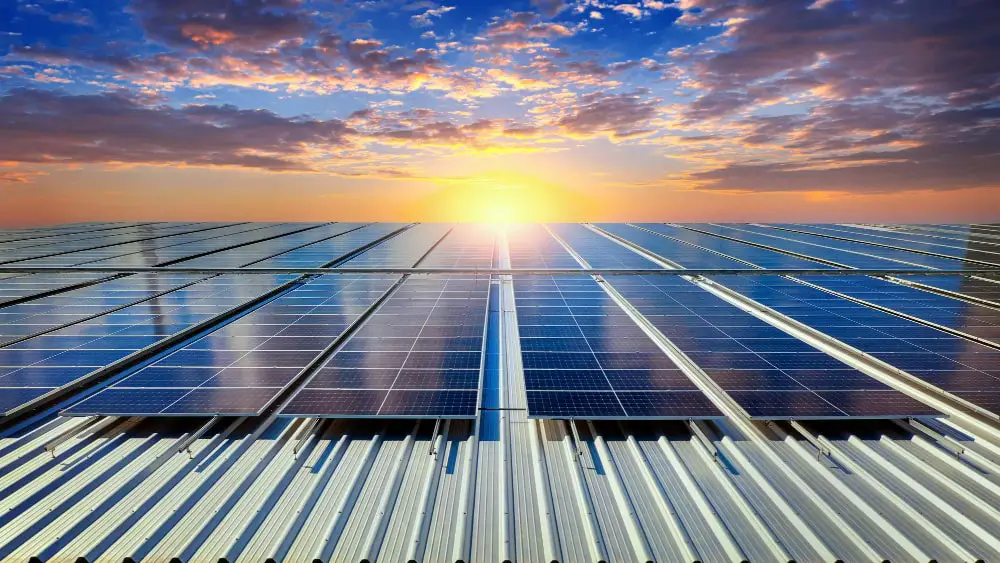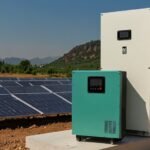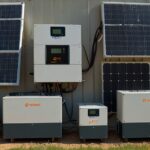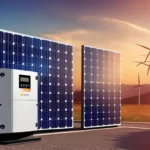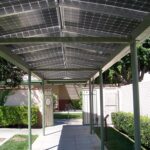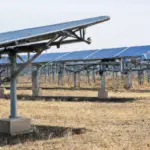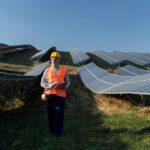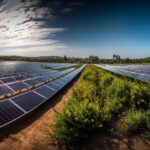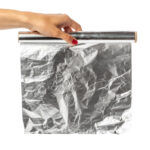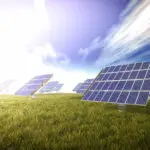As the world embraces the power of solar energy, it becomes increasingly vital to ensure the optimal performance of solar panels. Regular maintenance, including cleaning, is key to maximizing energy output. However, traditional water-based cleaning methods pose challenges in terms of water waste and safety concerns. Enter waterless solar panel cleaning, a game-changing solution that revolutionizes maintenance practices.
In this blog, we explore the unique benefits of waterless cleaning, its eco-friendliness, and efficiency. By adopting this innovative approach, you can boost panel performance while contributing to a greener future through water conservation and reduced carbon footprint.
Introducing Waterless Solar Panel Cleaning
Waterless solar panel cleaning is an innovative and efficient cleaning method that eliminates the need for excessive water usage. Traditionally, cleaning solar panels involved using water, which not only consumed a significant amount but also presented challenges in terms of safety, logistics, and potential panel damage. Waterless cleaning overcomes these limitations by utilizing eco-friendly cleaning agents and tools specifically designed for solar panel maintenance.
Benefits of Waterless Solar Panel Cleaning
- Conservation of Water: Water scarcity is a pressing global issue, making it essential to adopt sustainable practices. Waterless cleaning significantly reduces water consumption, making it an eco-conscious choice. While traditional methods can consume hundreds of gallons of water per cleaning session, waterless cleaning requires only a minimal amount or no water at all.
- Enhanced Efficiency: Traditional cleaning methods often left behind residues, streaks, or mineral deposits, which affected the panels’ performance. Waterless cleaning ensures a spotless finish, improving energy production. The specialized cleaning agents used in waterless methods effectively remove dust, dirt, pollen, and other contaminants without leaving any residue, allowing the panels to operate at their highest efficiency.
- Safety and Convenience: Waterless cleaning eliminates the risk of water-related accidents, especially when accessing high-mounted or rooftop solar panels. With no need for ladders or hoses, waterless cleaning simplifies the process and reduces safety concerns. The use of specialized cleaning tools, such as telescopic cleaning poles and soft-bristle brushes, makes it easier to reach and clean the panels effectively.
- Longevity and Cost Savings: Regular cleaning extends the lifespan of solar panels. Waterless methods prevent water-induced corrosion or damage, reducing maintenance costs and increasing the overall return on investment. By keeping the panels clean and free from debris, you can ensure their optimal performance, leading to maximum energy generation and minimizing the need for repairs or replacements.
Step-by-Step Waterless Solar Panel Cleaning Process
- Prepare the tools: Gather the necessary tools for waterless cleaning, including soft microfiber cloths, a soft-bristle brush, a squeegee, and a non-abrasive cleaning solution specifically formulated for solar panels.
- Dusting: Using a soft microfiber cloth or brush, gently remove loose debris and dust from the panel surface. This step helps prevent scratching or smearing the dirt during the cleaning process.
- Apply cleaning solution: Spray the non-abrasive cleaning solution onto the microfiber cloth, ensuring it is damp but not dripping. Carefully wipe the panels in a gentle, circular motion. Avoid applying excessive pressure to prevent scratching the surface.
- Drying: After wiping the panels with the cleaning solution, use a squeegee to remove any remaining cleaning solution, ensuring a streak-free finish. Alternatively, you can let the panels air dry naturally.
- Inspection: Once the panels are clean and dry, inspect them for any stubborn stains or debris that may require further attention. If necessary, repeat the cleaning process on those specific areas.
- Regular maintenance: Establish a cleaning schedule based on your location and environmental conditions to keep your solar panels in optimal condition. Depending on the surroundings, it is generally recommended to clean the panels every three to six months or as needed.
Environmental Impact of Waterless Solar Panel Cleaning
Water Conservation
Water scarcity is a global concern, and every effort to conserve water is crucial. Traditional cleaning methods can consume hundreds of gallons of water per cleaning session, putting strain on local water resources. Waterless cleaning drastically reduces water consumption or eliminates it altogether, minimizing the environmental impact associated with excessive water usage. By opting for waterless methods, you contribute to conserving this valuable resource for other essential purposes.
Prevention of Wastewater Pollution
Traditional cleaning methods involving water often lead to wastewater runoff, which can carry pollutants and contaminants from the panels and cleaning solutions into the surrounding environment. This runoff can find its way into natural water bodies, potentially harming aquatic ecosystems and compromising water quality. Waterless cleaning eliminates the production of wastewater, thereby reducing the risk of pollution and protecting local ecosystems.
Reduced Carbon Footprint
Waterless cleaning significantly reduces the carbon footprint associated with solar panel maintenance. Traditional methods not only consume water but also require energy for water heating, transportation, and the disposal of wastewater. By eliminating or minimizing these energy-intensive processes, waterless cleaning reduces greenhouse gas emissions, helping combat climate change.
Non-Toxic Cleaning Agents
Waterless cleaning methods utilize specialized non-toxic cleaning agents that are specifically formulated for solar panels. These cleaning solutions are environmentally friendly and do not introduce harmful chemicals into the environment. The use of non-toxic cleaning agents ensures that nearby vegetation, wildlife, and aquatic ecosystems are not negatively impacted. Waterless cleaning provides a safe and sustainable alternative to traditional methods that may rely on harsh chemicals or detergents.
Sustainable Maintenance Practices
Adopting waterless cleaning practices for solar panels promotes a more sustainable maintenance approach. By reducing the reliance on water and embracing eco-friendly cleaning agents, you align your solar panel maintenance with broader sustainability goals. This commitment to sustainability extends the positive impact of your solar energy system beyond its energy production, contributing to a more environmentally responsible future.
Conclusion
Waterless solar panel cleaning offers a transformative and sustainable solution to maintain the efficiency of solar energy systems. By adopting this innovative approach, you can maximize the performance of your solar panels while minimizing the environmental impact.
The benefits of waterless cleaning, such as water conservation, reduced carbon footprint, and the use of eco-friendly cleaning agents, make it a superior choice over traditional water-based methods. Not only does it save water, but it also ensures the longevity of your solar panels, leading to long-term cost savings and a higher return on investment.

